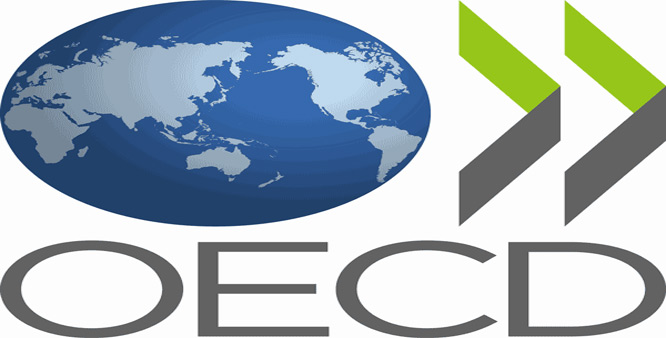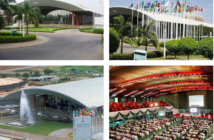The latest edition of How’s Life? that charts the promises and pitfalls for people’s well-being in 35 OECD countries and 6 partner countries brings to light the many well-being disadvantages that migrants face in adapting to life abroad.
In particular, it highlights that migrants’ household incomes are on average 25% lower than for the native-born. Also, migrants are more likely to work in poor conditions, be overqualified for their jobs and report lower health, life satisfaction and social support than the rest of the population.
|
How’s life in 2017?
|
|
What makes for a good life? While the richness of human experience cannot be captured in numbers alone, it is important that the statistics shaping public policy reflect both people’s material living conditions, and the quality of their lives. This includes how life is changing over time, how lives differ across different population groups, and whether today’s well‑being is achieved at the cost of depleting resources for the future. This fourth edition of How’s Life? aims to meet this need, providing a picture of people’s well‑being in OECD and partner countries.
|
|
Life is better for some, but several aspects of well‑being are lagging behind
|
|
The financial crisis had a deep and long‑lasting impact on people’s lives, and particularly their jobs. Looking at the change in well‑being since 2005, Chapter 1 shows that people are better off in some ways, but progress since the crisis has been slow, and several aspects of well‑being have fallen behind. Household income and average annual earnings have increased cumulatively by 7% and 8%, respectively since 2005 – yet this is roughly half the growth rate recorded between 1995 and 2005. The share of people living without access to basic sanitation (already low in most OECD countries) has fallen by just over one‑third, and more people say they feel safe when walking alone at night. And, although it stalled in 2015, OECD average life expectancy has gone up by nearly two years overall.
Despite these gains, other aspects of well‑being have failed to keep pace. In around half of all OECD countries, long‑term unemployment remains higher than in 2005, and labour market insecurity is around one‑third higher than when first measured, in 2007. Compared to the pre‑crisis years, voter turnout has fallen, the OECD average life satisfaction has decreased slightly, and the share of people who feel supported by friends and family has fallen by 3 percentage points. The picture remains mixed for the resources that sustain well‑being over time. Here again, progress in some indicators (e.g. falling per capita greenhouse gas emissions, a reduction in smoking, greater investment in R&D, and higher produced economic assets) is offset by worsening conditions in others (e.g. rising household debt in a majority of countries, falling financial net worth of government, increasing obesity, and falling trust in government).
|
|
The many faces of inequality
|
|
Inequalities can touch every aspect of people’s lives. Chapter 2 considers inequalities in well‑being through several different lenses: from gaps between the top and bottom of the distribution, through to differences in well‑being according to gender, age, and education. It shows that while some societies are more equal than others, there are pockets of both high and low inequality in all OECD countries. Inequalities also interact, compounding disadvantage. For example, people in the top 20% income bracket are twice as likely as those in the bottom 20% to report high life satisfaction. And people with high life satisfaction are four times more likely to report being in good health when compared to those with low life satisfaction. Many people in OECD countries lack the wealth buffer they need to protect themselves from income shocks. If they had to forgo three months’ of their income, more than one‑third of people would fall into poverty, based on evidence from 25 OECD countries.
|
|
Migrants face multiple challenges to their well‑being
|
|
On average, 13% of the population in OECD countries were born abroad. Migrants are a diverse group, both across and within OECD countries: from highly skilled professionals seeking new opportunities, to people escaping war and destitution. Chapter 3 shows that life in their new homes can raise many challenges for migrants’ well‑being. The median income of migrants is 25% lower than that of the native‑born, and median net wealth is 50% lower. Although migrants’ chances of having a job are similar to those of the native‑born, they are more likely to work antisocial hours, to be employed in low‑paid jobs, and to be exposed to risky or harmful working conditions. In several cases, migrants are also unable to make the most of the skills that they bring with them: almost 30% of migrants with a tertiary degree are overqualified for their jobs, compared to 20% of the native‑born. In addition to poorer working conditions, migrants also face poorer living conditions: 1 in 4 migrants report being exposed to air and noise pollution in the area where they live, compared to 1 in 5 of their native‑born peers; and 41% of migrants live in sub‑standard or overcrowded housing, compared to 27% of the native‑born. Migrants also report worse health, lower social support, and lower subjective well‑being than the native‑born in most OECD countries assessed. However, there is much progress to be made on the measurement of migrants’ well‑being, particularly since household surveys often struggle to reach the most vulnerable groups.
|
|
A gap between public institutions and the people they serve
|
|
The steady decline in voter turnout among OECD countries has been a concern for many years. Chapter 4 shows other ways in which people feel distant from the public institutions that serve them. More than half of OECD residents consider corruption to be widespread in their government. Trust in public institutions has fallen since 2005, and only 33% of people feel they have a say in what the government does. The distance grows larger for those who are most under‑represented in public life: people without an upper secondary education are less likely to feel that they have a say in policy decisions, compared to those with a tertiary education. Self‑reported voter turnout is 13 percentage points lower for people in the bottom 20% income bracket, compared to those in the top 20% bracket. Europeans are generally satisfied with how elections are run, but much less so with policy actions to reduce inequalities. Satisfaction with public education and health services varies widely across countries, but tends to be higher among people who have used these services recently. This suggests that experience matters when it comes to shaping people’s perceptions.
|




